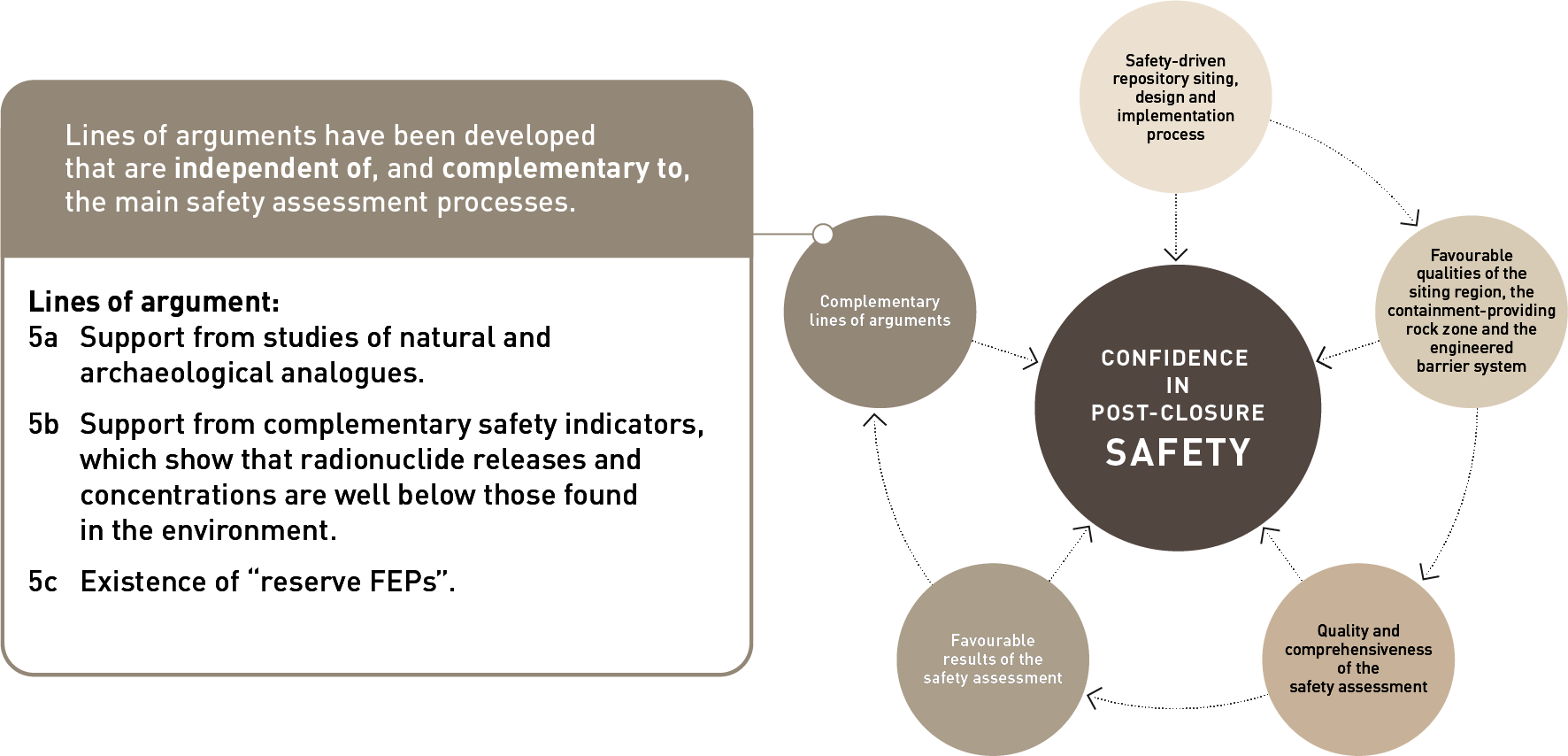Finally, lines of argument have been developed that are independent of, and complementary to, the main safety assessment processes. These are summarised in Fig. 10‑8 and in the following paragraphs.
5a: Support from studies of natural and archaeological analogues
Indirect support for the safety of deep geological repositories comes from observations of natural and archaeological analogues, including the longevity of uranium ore deposits in many different geological environments around the world, as discussed in more detail in Section 9.1. The low mobility of many radionuclides in such environments and the demonstration that clay rocks provide robust transport barriers are of particular interest. Sedimentary uranium ore deposits and studies on natural or archaeological glasses provide information relevant to the stability of SF and RP-HLW. Indications of slow, diffusion-dominated transport in clay formations is gained from isotope exchange and diffusion studies around the globe. Moreover, numerous examples exist in the oil and gas industry where clay-based seals have been demonstrated to prevent oil and gas transport completely over timescales of thousands to millions of years.
Natural and archaeological analogues, which allow processes and their effects to be observed on large temporal and spatial scales, similar to, or even exceeding, those relevant to safety assessment, provide insights into the durability of system components and into the effective isolation of radioactive materials in a repository. They can showcase the resilience of chosen barrier materials to potentially detrimental repository-induced effects and to long-term degradation processes. Analogues have been identified that yield information on the stability and performance of the geological barrier, the individual engineered barriers, and the interfaces between these barriers.
Natural and archaeological analogues relevant to the proposed repository system are summarised in Section 9.1 of the present report.

Fig. 10‑8:Lines of argument that are independent of, and complementary to, the main safety assessment processes
5b: Support from complementary safety indicators, which show that radionuclide releases and concentrations are well below those found in the environment
Safety and performance indicators complementary to dose and risk provide addition insights into:
-
the evolution of the hazard potential of the waste,
-
how radiotoxicity (a measure of this hazard potential) is distributed within the repository system and how it diminishes over time due to radioactive decay predominantly within the repository system, with little reaching the biosphere, and
-
how the fluxes and concentrations of radiotoxicity are generally much smaller than, or similar to, natural or other man-made radiotoxicity fluxes and concentrations.
Complementary safety and performance indicators are described further in Section 9.2 of the present report. They are computed from the results of radiological consequence analysis and are documented in more detail in Chapter 7 of NTB 24-18 (Nagra 2024p).
5c: Existence of “reserve FEPs”
Conservative assumptions and simplifications are widely used in the analysis of radiological consequences. These include the omission of several “reserve FEPs”, which have the potential, in the future, to provide additional quantitative contributions to the evaluated performance of the disposal system, although many of these would likely have only minor impacts on total dose, even if they were included. Conservative assumptions and simplifications mean that the doses calculated for each of the safety scenarios err on the side of caution, being higher than would be expected in reality. Many examples are provided in Section 9.3 of the present report.

